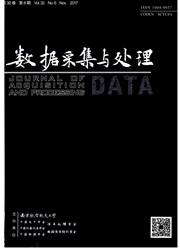

 中文摘要:
中文摘要:
计算量过大是制约时频原子分解算法在信号处理中应用的主要原因。针对这一问题,提出了一种基于改进量子遗传算法的快速时频原子分解算法。该方法在自适应匹配能力强的Chirp原子库的基础上,利用改进量子遗传算法快速寻找能够表示雷达辐射源信号特征信息的最佳时频原予,从而降低时频原子分解算法的计算复杂度。对雷达辐射源信号的仿真实验结果表明,该方法比传统的时频原子分解算法计算速度大幅度提高,计算量减小,而且重构信号时频图时频聚集性好,并有一定的抗噪性能。
 英文摘要:
英文摘要:
High computational complexity of time frequency atom decomposition (TFAD) limits its applications in signal processing. To solve this problem, a fast TFAD based on improved quantum-inspired genetic algorithm (IQGA) is presented. In this approach, the strong adaptive capability of Chirp atom dictionary is used; and IQGA is used to fast search the best timefrequency atom and the atom represents the features of radar emitter signals. Thus, the computational time can he greatly reduced. Experimental results for radar emitter signals show that the method is better than the conventional TFAD at the computing speed, computational cost, time-frequency concentration of reconstructed signals, and noise-suppression performance.
 同期刊论文项目
同期刊论文项目
 同项目期刊论文
同项目期刊论文
 期刊信息
期刊信息
